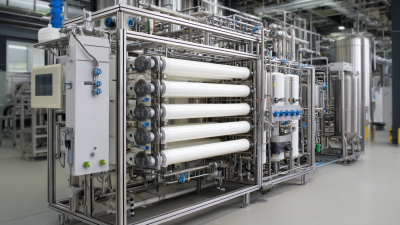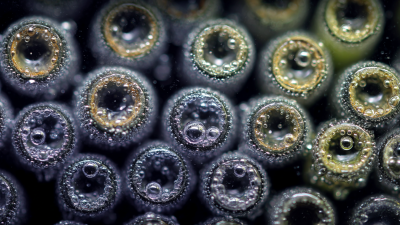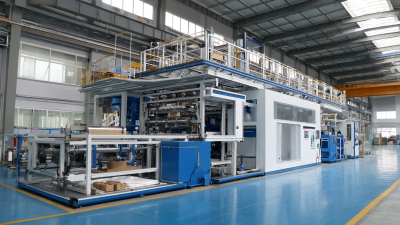How to Optimize Cross Flow Filtration for Maximum Efficiency in Industrial Applications
In today's competitive industrial landscape, optimizing processes for enhanced efficiency is more crucial than ever, especially in the context of cross flow filtration. According to a recent report by the International Filtration Society, the global market for filtration technologies is expected to reach $30 billion by 2025, with cross flow filtration being a significant contributor due to its ability to separate particles effectively while minimizing fouling. Industries ranging from pharmaceuticals to food and beverage are increasingly adopting this technology to improve product quality and operational speed. However, many organizations still struggle to achieve maximum efficiency, often due to suboptimal operating conditions and inadequate understanding of system dynamics.

This blog will explore practical strategies to optimize cross flow filtration systems, ensuring that industrial applications not only meet regulatory standards but also enhance productivity and reduce costs.
Understanding Cross Flow Filtration: Principles and Applications
Cross flow filtration is a fundamental technique used in various industrial applications to separate particles from liquids while maintaining high-efficiency rates. Unlike traditional filtration methods, where the fluid passes through the filter media, cross flow filtration allows the feed to flow parallel to the filter surface. This design minimizes the build-up of concentrated particles on the filter, reducing fouling and enhancing the longevity of the filter medium. The key principle behind this process lies in the shear force generated by the cross flow, preventing the formation of a gel layer that can impede flow and efficiency.
The applications of cross flow filtration are vast and can be seen across multiple industries, including food and beverage, pharmaceuticals, and wastewater treatment. In the food and beverage sector, for instance, it is employed to clarify juices and remove unwanted components from beer, resulting in products with superior quality and shelf stability. In the pharmaceutical industry, it plays a crucial role in purifying active ingredients, ensuring that products meet stringent health standards. Moreover, in wastewater management, cross flow filtration aids in the separation of solids from liquids, facilitating more efficient treatment processes and contributing to environmental sustainability efforts.
Key Benefits of Cross Flow Filtration in Industrial Processes
Cross Flow Filtration (CFF) is increasingly becoming a staple in industrial applications due to its several key benefits. Unlike traditional filtration methods, CFF allows the feed stream to flow parallel to the membrane surface, significantly reducing the chances of membrane fouling. This unique flow pattern helps maintain a cleaner membrane, which not only enhances the filter's lifespan but also results in more consistent product quality. As a result, industries ranging from food and beverage to pharmaceuticals can achieve higher purity levels in their final products.
Another significant advantage of CFF is its efficiency in handling large volumes of fluid. The process is capable of continuously processing high flow rates while minimizing energy consumption. This makes it a cost-effective solution for large-scale operations. Additionally, the ability to operate at lower pressure settings further reduces the energy demands associated with filtration, contributing to overall sustainability goals. By integrating Cross Flow Filtration into their processes, industries can not only enhance productivity but also lower operational costs, making it a wise investment in today’s competitive market.

Techniques for Enhancing Efficiency in Cross Flow Filtration Systems
Optimizing cross flow filtration systems can significantly enhance efficiency in various industrial applications. To achieve this, it is essential to implement a few key techniques that can improve overall performance and minimize operational costs.
One effective method is to optimize the flow rate and pressure. Adjusting the cross flow velocity ensures that the feed is adequately swept across the membrane surface, reducing fouling and prolonging membrane life. A good tip is to experiment with different flow rates during trials to find the sweet spot where filtration efficiency peaks without compromising quality. Additionally, maintaining a consistent pressure can aid in achieving steady-state operation, which is crucial for reliable results.
Another technique involves pre-treatment of feed solutions. By utilizing methods such as coagulation, flocculation, or microfiltration before the main filtration process, you can reduce the load on the membrane and enhance its lifespan. A practical tip is to regularly monitor the quality of the feed water; adapting pre-treatment processes in response to changes in feed characteristics can lead to significantly improved performance. Implementing these strategies not only optimizes the filtration process but also contributes to sustainable operations in industrial settings.
How to Optimize Cross Flow Filtration for Maximum Efficiency in Industrial Applications
| Parameter | Recommended Value | Description |
|---|---|---|
| Cross Flow Velocity | 0.1 - 2.0 m/s | Optimal velocity to minimize fouling and maximize flux. |
| Transmembrane Pressure | 0.1 - 0.5 MPa | Pressure across the membrane affecting permeate flow rate. |
| Feed Concentration | 5 - 15 g/L | Concentration level to ensure effective separation without clogging. |
| Membrane Type | Polymeric / Ceramic | Selection based on chemical compatibility and temperature tolerance. |
| Operating Temperature | 20 - 60 °C | Temperature range for optimal permeate quality and flux rate. |
| Cleaning Frequency | Every 24-72 hours | Regular cleaning to maintain efficiency and prolong membrane life. |
| Concentrate Recycling | 75 - 90% | Percentage of concentrate reused to enhance recovery rates. |
Common Challenges in Cross Flow Filtration and How to Address Them
Cross flow filtration is a powerful technique widely employed in various industrial processes, but it comes with a set of challenges that can hinder efficiency. One common issue is membrane fouling, where particles accumulate on the membrane surface, reducing its permeability. To combat this, operators can implement regular backwashing procedures or adjust flow rates to disrupt the fouling layer. Additionally, incorporating cleaning protocols using appropriate chemicals can significantly help in maintaining membrane integrity and performance.
Another challenge in cross flow filtration is maintaining optimal operating conditions. Variations in temperature, pressure, and feed concentration can lead to inconsistent quality and reduced efficiency. A proactive approach involves constant monitoring of these parameters using advanced sensors and automation technologies. By establishing a robust control system, operators can quickly adjust conditions to ensure that the filtration process runs smoothly. Regular training for personnel on best practices and troubleshooting techniques can further mitigate these challenges, leading to a more efficient filtration process tailored for specific industrial applications.

Case Studies: Successful Implementation of Cross Flow Filtration Solutions
In the realm of industrial applications, cross flow filtration has emerged as a game-changing technology, enhancing the efficiency of various processes. Case studies from industries such as food and beverage, pharmaceuticals, and wastewater treatment demonstrate the tangible benefits of implementing these filtration solutions. For instance, a leading beverage manufacturer recently integrated cross flow filtration into their production line, resulting in a 30% reduction in processing time and a 25% decrease in waste materials. This success stemmed from optimizing membrane selection and operational parameters, tailored specifically to their product's characteristics.
Similarly, in the pharmaceutical sector, a company focused on vaccine production reported remarkable improvements after adopting cross flow filtration techniques. By carefully calibrating the flow rates and transmembrane pressure, they not only increased their yield but also enhanced the purity of the final product. These adjustments coupled with real-time monitoring systems allowed them to maintain consistent quality while scaling up production. Such case studies illustrate that the careful implementation of cross flow filtration can lead to significant operational efficiencies, cost savings, and improved final products across various industries.
Optimization of Cross Flow Filtration Efficiency
Related Posts
-

5 Industry Applications of the Best Cross Flow Filtration: 7 Compelling Reasons for Implementation
-

Emerging Trends in Best Pulp Industries to Watch for Global Buyers in 2025
-

Enhancing After-Sales Service: Unmatched Repair Costs with the Best Filtration Technology
-

Exploring Alternatives to Best Microfiltration Membrane Technology for Enhanced Water Purification
-

Unveiling the Advantages of the Best Pulp Molding Machines for Diverse Product Applications
-

Innovative Examples of Ultra Pure Water Purification Systems Transforming Industrial Standards